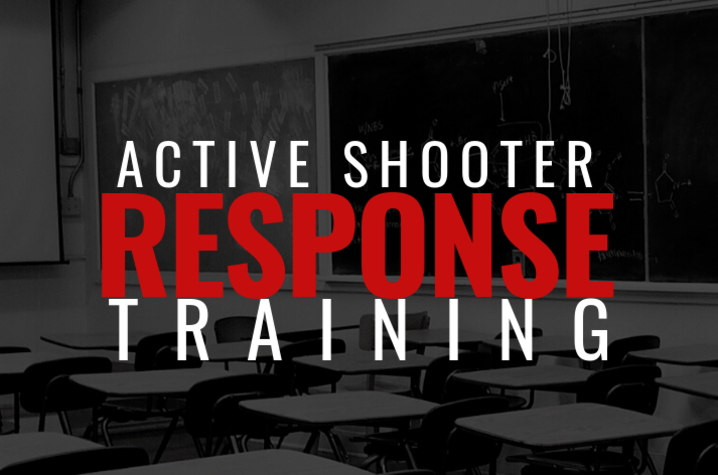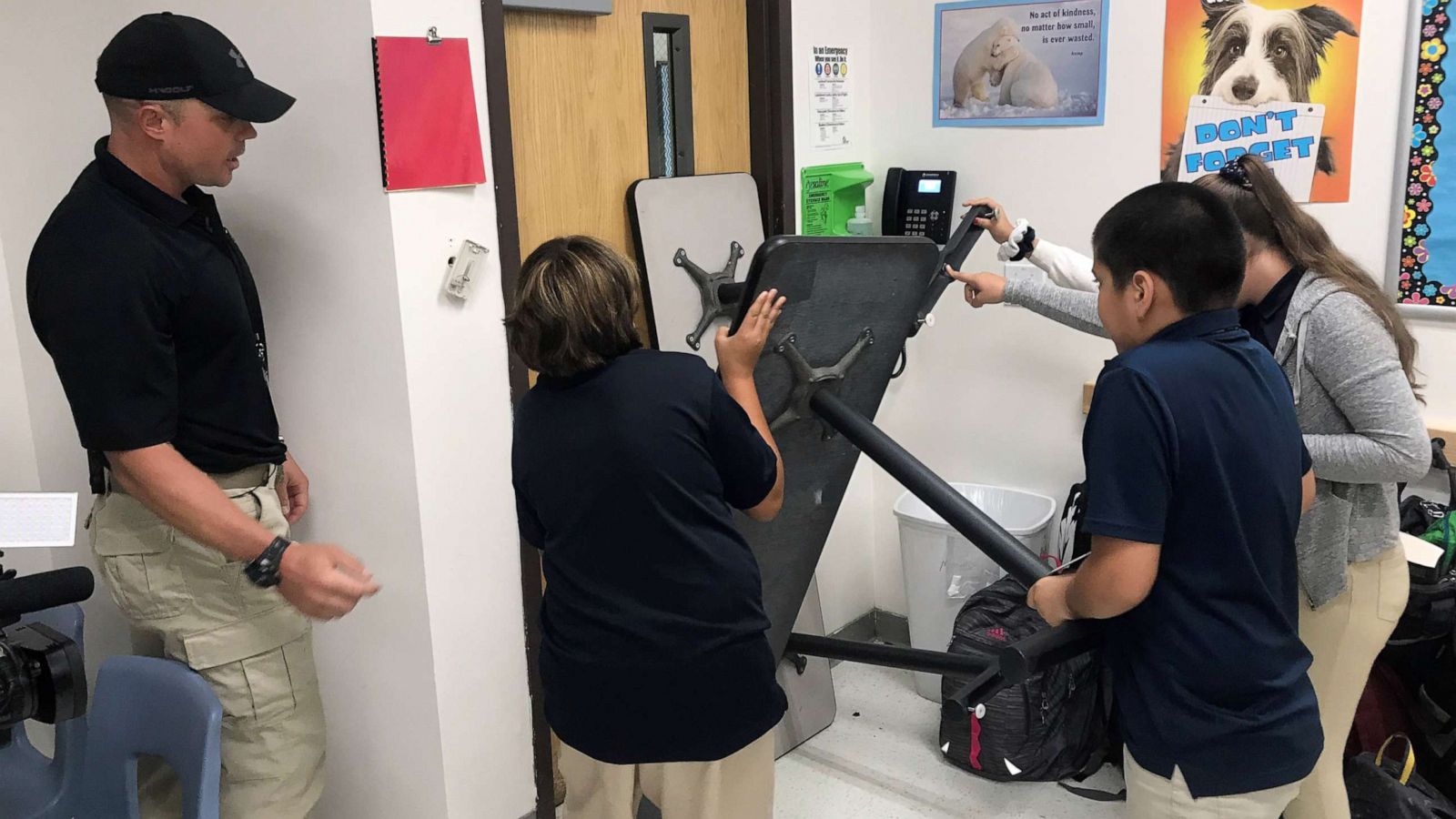Why Active Shooter Training Is Necessary for Workplace Safety And Security
Why Active Shooter Training Is Necessary for Workplace Safety And Security
Blog Article
Checking Out the Trick Elements and Objectives of Effective Active Shooter Training Programs
Active shooter training programs are vital in gearing up people and companies with the necessary skills to respond properly to potential risks. As we discover the ins and outs of these training programs, it comes to be noticeable that recognizing their detailed nature is crucial to improving safety steps and reaction capacities.
Significance of Active Shooter Training
Energetic shooter training programs are crucial for improving readiness and reaction in the face of prospective dangers. These programs intend to equip individuals, organizations, and neighborhoods with the expertise and skills necessary to properly reply to active shooter scenarios. The boosting regularity and seriousness of such cases underscore the significance of aggressive measures, as timely and informed feedbacks can significantly mitigate harm.
Moreover, active shooter training fosters a society of safety and recognition within establishments, whether they be schools, workplaces, or public venues. Participants learn to acknowledge very early indication and recognize the importance of interaction and synergy during emergencies. This training not only emphasizes individual safety yet additionally promotes a collective responsibility to shield others.
Additionally, these programs can help reduce the anxiety and concern that often come with discussions about potential risks. By giving structured assistance and practical methods, individuals acquire self-confidence in their capability to react suitably. Inevitably, the relevance of active shooter training depends on its possible to conserve lives, lower injuries, and grow a ready and resistant community efficient in dealing with unpredicted difficulties.
Key Components of Training Programs
Reliable active shooter training programs normally include numerous crucial parts developed to prepare individuals for real-world scenarios. The first element is extensive education on the nature of energetic shooter occurrences, including statistics, study, and mental variables that influence aggressors. This theoretical structure is vital for promoting awareness and understanding among participants.
Following, programs usually consist of training on personal precaution, stressing the "Run, Hide, Battle" method. Individuals learn exactly how to evaluate their environment, make quick choices, and take proper actions during a dilemma. In addition, the incorporation of effective communication abilities is important, as individuals need to recognize exactly how to report incidents and share important information with law enforcement.
One more essential component is the involvement of regulation enforcement or security experts, that supply insights right into tactical actions and the relevance of collaboration during a dilemma. Programs must address the psychological after-effects of an active shooter scenario, supplying approaches for dealing and recovery.
Finally, continuous training and refresher courses are critical to ensure that expertise remains current and individuals feel great in their capabilities. With each other, these essential components produce an all-round training program that outfits individuals to respond efficiently to an active shooter occasion.
Realistic Scenario Simulations
Reasonable scenario simulations are a crucial facet of active shooter training programs, offering individuals with the possibility to participate in hands-on method that mirrors prospective real-life situations. like it These simulations enhance the training experience by creating an immersive environment where people can use theoretical expertise in functional setups.
Via making use of role-playing, simulated scenarios, and specialized training facilities, individuals experience the instant difficulties and stressors related to an energetic shooter event. This method of training promotes quick decision-making, teamwork, and the application of security procedures under stress. It allows responders to create essential abilities such as situational awareness, risk evaluation, and efficient discharge treatments.
In addition, realistic simulations aid to recognize possible weak points in individuals' actions, enabling trainers to supply targeted feedback and improve total readiness. The consolidation of differing circumstances, consisting of different places and assailant accounts, better improves the training experience, making certain that participants are well-appointed to deal with a series of possible circumstances.
Eventually, these simulations serve not just to advise yet additionally to construct self-confidence amongst individuals, promoting a feeling of readiness that is necessary for reliable emergency action in the face of an energetic shooter risk.
Interaction Approaches in Training
Clear communication is vital in energetic shooter training programs, as it directly influences the efficiency of response initiatives throughout a situation. active shooter training. Training participants have to recognize the procedures and procedures that will assist their activities if confronted with an active shooter scenario. Establishing clear lines of communication makes sure that all people involved can pass on information without delay and accurately

Moreover, training programs should highlight the relevance of active listening. Ultimately, effective communication approaches are necessary for preparing individuals to respond emphatically and cohesively in the face of an active shooter occurrence.

Emotional Readiness Techniques
Mental readiness techniques are increasingly acknowledged as essential components of energetic shooter training programs - active shooter training. These methods aim to gear up people with the mental strength essential to respond successfully in high-stress circumstances. By cultivating a mindset attuned to potential hazards, participants can better manage anxiety, anxiety, and complication during vital incidents
Secret mental readiness strategies include scenario-based training and stress and anxiety inoculation exercises. Scenario-based training submerses individuals in reasonable simulations official statement that imitate the turmoil of an energetic shooter event, allowing them to practice decision-making under stress. This exposure helps develop experience with emergency situation protocols, enhancing natural actions.
Stress vaccination entails steady direct exposure to stress-inducing situations, allowing people to develop coping devices. This can include breathing workouts, visualization techniques, and cognitive restructuring to reframe negative thoughts. By incorporating these strategies, training programs can cultivate a sense of confidence and control, which is essential in dilemma scenarios.
Moreover, post-incident emotional assistance is essential to address the psychological aftermath of an active shooter event. Integrating mental health and wellness resources into training programs not only prepares people for prompt responses yet also advertises long-lasting psychological well-being, eventually contributing to a safer and more durable setting.
Final Thought
Finally, efficient active shooter training programs are vital for boosting preparedness and feedback capabilities despite prospective threats. By incorporating essential components such as realistic situation simulations, communication methods, and emotional readiness techniques, these programs gear up individuals and companies with the needed skills to navigate high-stress circumstances. Ultimately, a comprehensive approach to training cultivates resilience and advertises a society of safety, consequently adding to the overall safety of neighborhoods in case of an energetic shooter occurrence.
Report this page